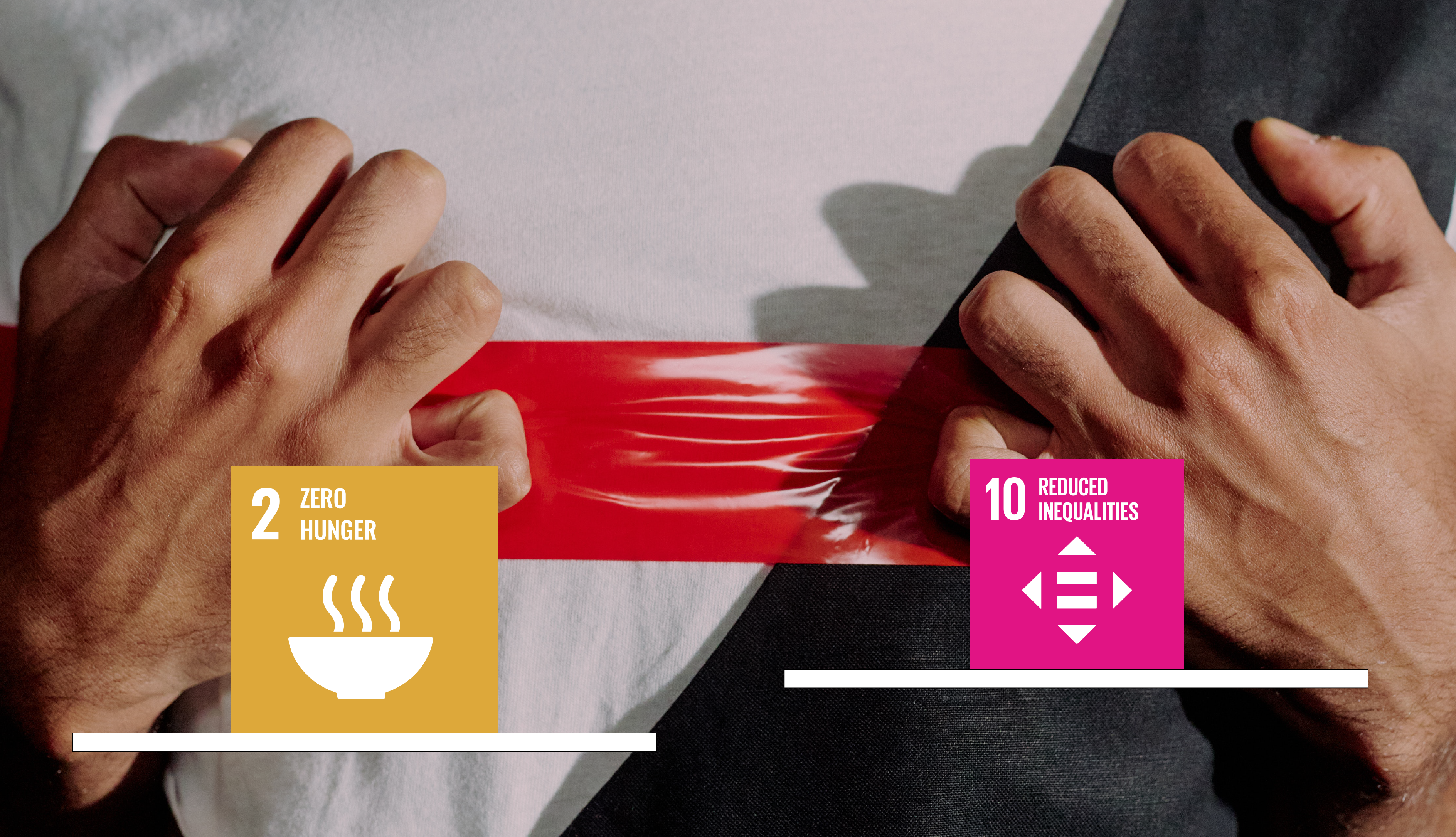COURSE DESCRIPTION
What can the school and any citizen do to contribute to the reduction of inequalities and help assure access to quality food?
Primary SDG 2, secondary SDG 10
SDG 2 Zero Hunger– Action needs to be taken to provide food and humanitarian relief to the most at-risk regions and to make profound changes of the global food and agriculture system.
SDG 10 Reduced Inequalities – The World must work urgently to reduce inequalities and ensure no one is left behind. This is determinant to achieve the Sustainable Development Goals.
Problem Based Learning Methodology
1. Problematize to raise the analysis
2. Group work on data collection, analysis, presentation, mapping and local action.
3. Dialogue with local interest groups during individual classroom.
PROBLEM STATEMENT
With more than a quarter of a billion people potentially at the brink of starvation, swift action needs to be taken to provide food and humanitarian relief to the most at-risk regions. At the same time, a profound change of the global food and agriculture system is needed if we are to nourish the more than 690 million people who are hungry today.
Reducing inequalities and ensuring no one is left behind are integral to achieving the Sustainable Development Goals. Inequality within and among countries is a persistent cause for concern. Despite some positive signs toward reducing inequality in some dimensions, such as reducing relative income inequality in some countries and preferential trade status benefiting lower-income countries, inequality still persists.
The school and all citizens have a role to play in the contribution to the reduction of inequalities and help assure access to quality food.
Working questions:
- What is the importance of the Sustainable Development Goals?
- What are the United Nations and why is it such an important organization?
- What are the aims of SDG 2 and SDG 10?
- What are the local and global statistics around hunger and inequality? What do these numbers tell us?
- Where do we find hunger cases in this world?
- What are the causes and consequences of hunger?
- Why should hunger be such a big concern for all of us?
- Who is/can be affected by inequality? Is there a nexus between inequality and poverty?
- What big differences can be found in the reality of two individuals around the world with different opportunities and quality of life?
- What struggles does hunger and inequalities bring to students facing these issues?
- What is the role of each student, as a citizen, inside and outside the ‘walls’ of the school?
- Have students thought about what it would be like to put on these shoes?
- Have students been aware of other students struggling?
- What can students as citizens do to contribute to a world with less hunger and inequalities?
- How is the school helping to reduce inequalities regarding the access of students to food? What could be improved?
SHARED CLASSROOM
The activities can be divided in different shared session.
Sessions
Week 1 – Introduction to the project and introduction of participants
- Ice breaker and getting to know each other
- Introduction to the project and the work plan
- What are Sustainable Development Goals?
- Introduction to SDG 2 – Zero Hunger
- Introduction to SDG 10 – Reduced Inequalities
- The United Nations Charter
Week 2 & 3 – Working further on SDG 2 and 10
- What are the aims of SDG 2 and 10?
- Group research and presentation about these goals
Week 4 – Hunger & reduced inequality problematic
- Definition, causes and consequences of Hunger
- Problematic of hunger – Statistics
- Inequalities: definition, statistics, finding a nexus between inequality and poverty
- Activities:
- World map: Identify affected areas and give a face to hunger
- Activity – Video confronting two different realities (One Child struggling and other with more opportunities)
- Build a menu with reduced resources
Week 5 – The role of the School and the citizen
- Group work on the school’s and the citizen’s impact with proposal of activities:
- What are the struggles of a student with hunger?
- Have students been aware about these cases?
- Search for activity: What can we do about it as citizens?
- Competition: Donate grains on freerice.com
- The top 10 list to fight hunger – What can everyone do in his/her everyday life to contribute?
Week 6 – Interviews
- Interview with the school’s representative
- Interview to a real case of hunger
- Interview and search for (local) activity with local interest group(s)
The class can be divided in mixed working groups from both countries or only from their own.
Lessons:
Shared Classroom 5
Individual Classroom 7
Technology needed:
- Internet connection
- A device to connect, a pc, cellphones or tablet
- Each participant has his/her own device and headphones if possible
LEARNING OUTCOMES
During the project, the students can develop different kind of products:
- Videos
- Post it wall
- Activities on awareness rising
- Local and Global action (Freerice.com, voluntary activities)
- World map – Faces of Hunger
- Videos and scripts of interviews
- Powerpoint presentations
- List with recommendations for action
For the full Teaching module click on the green button above.
Course Features
- Lectures

